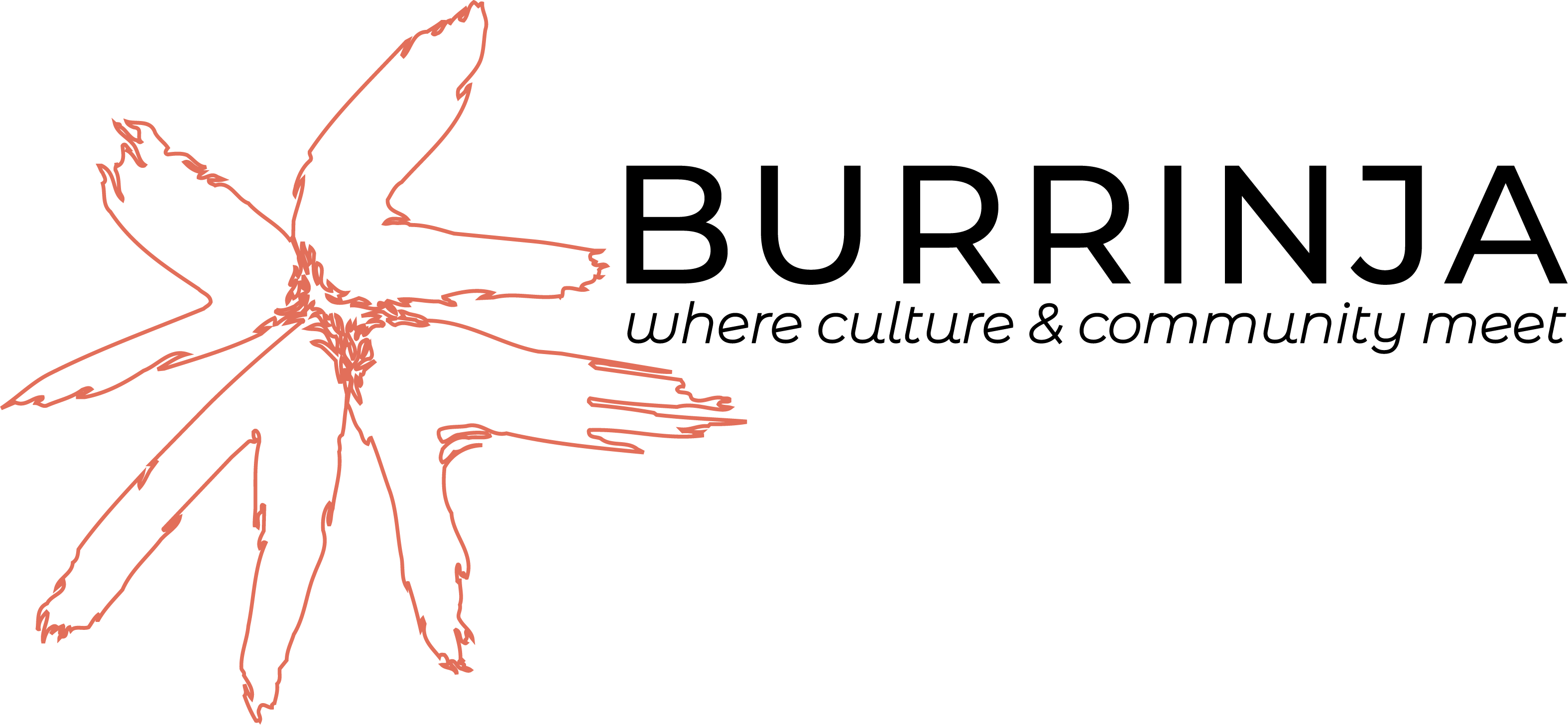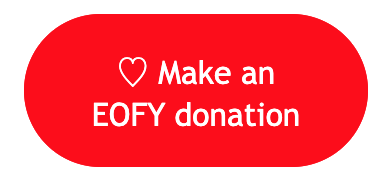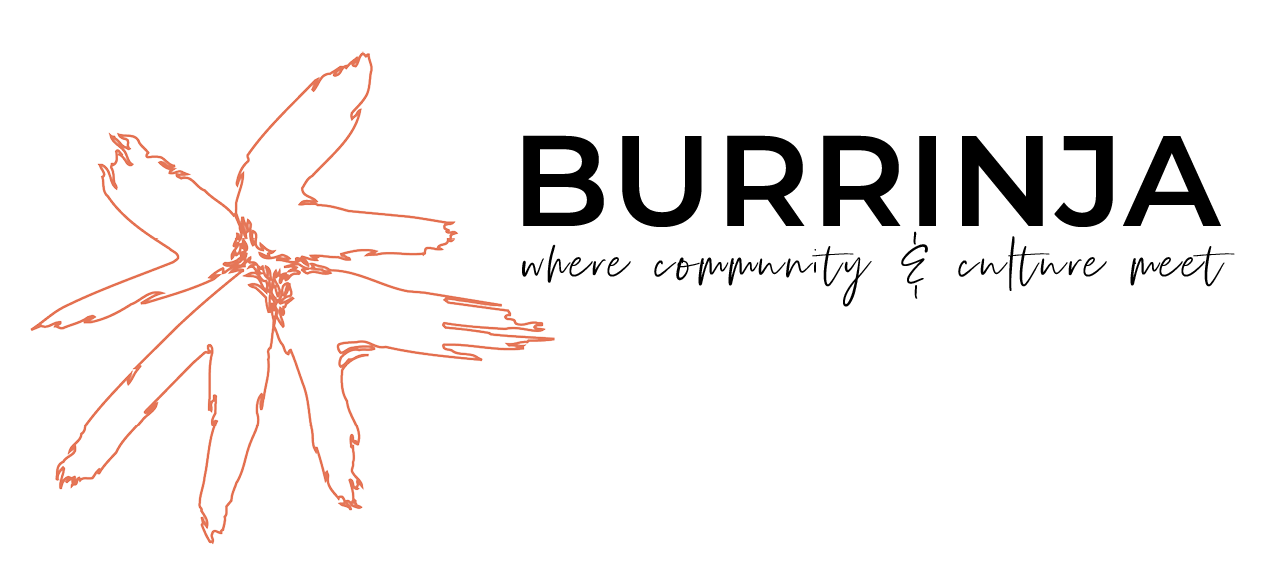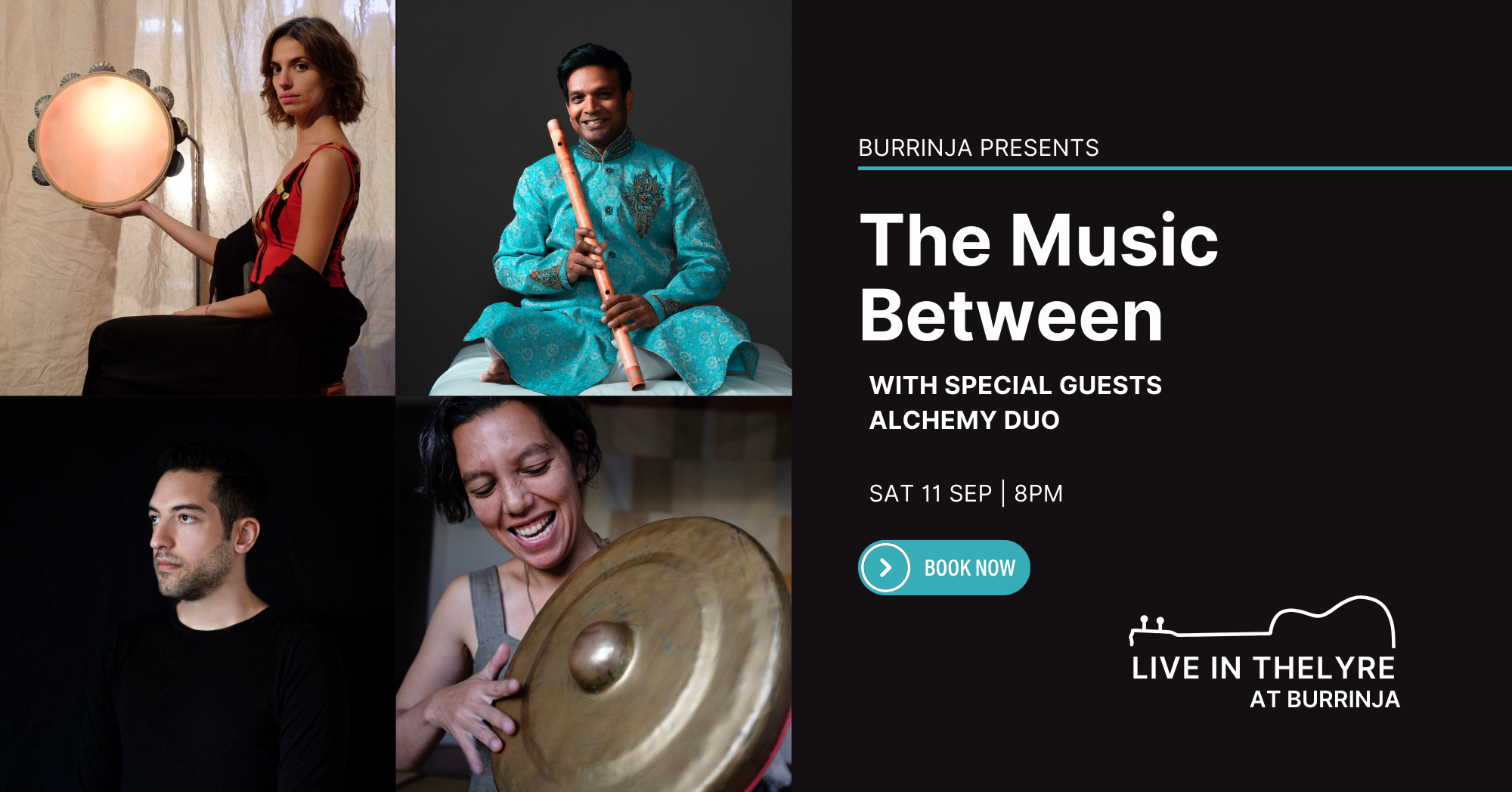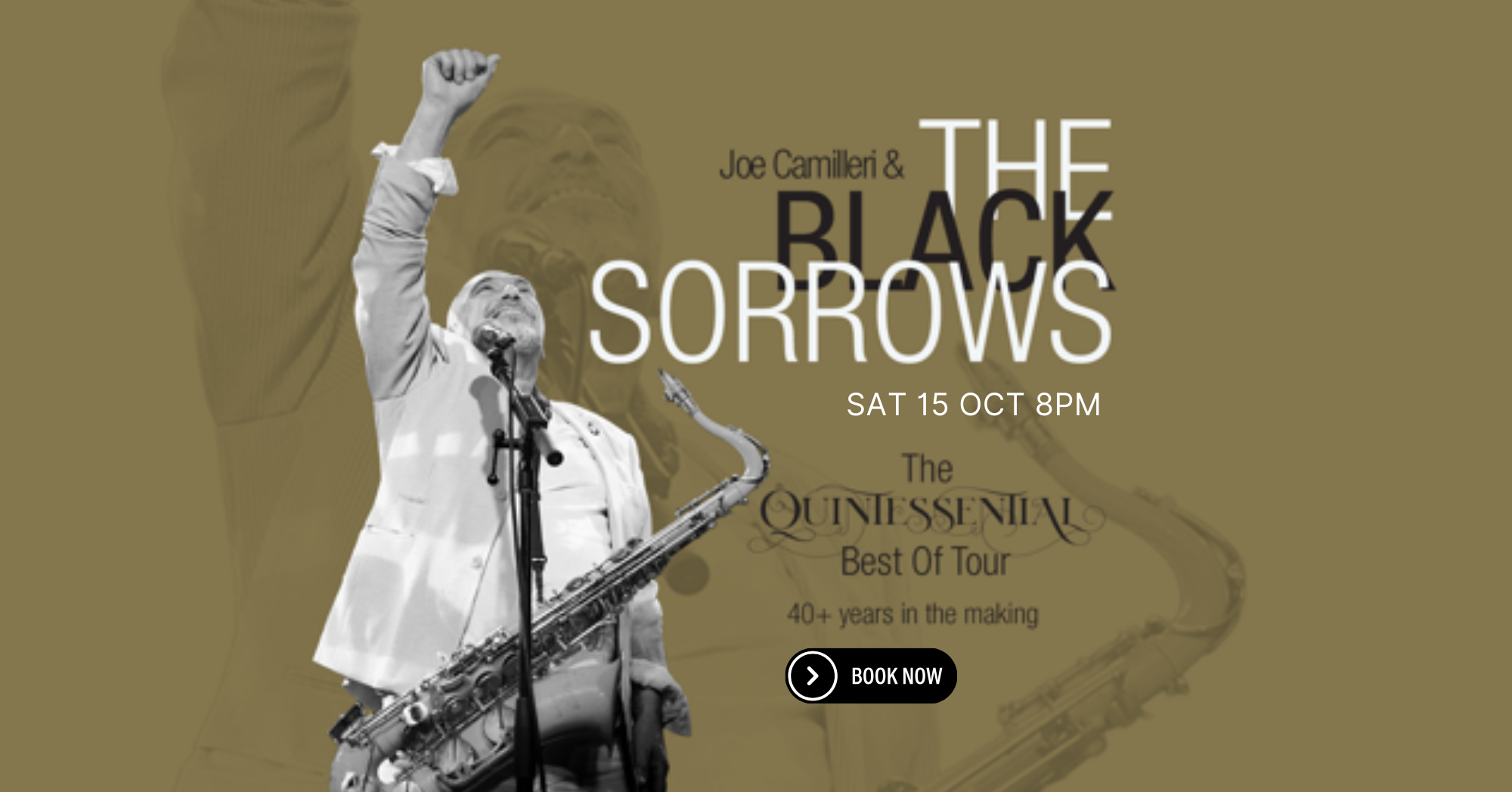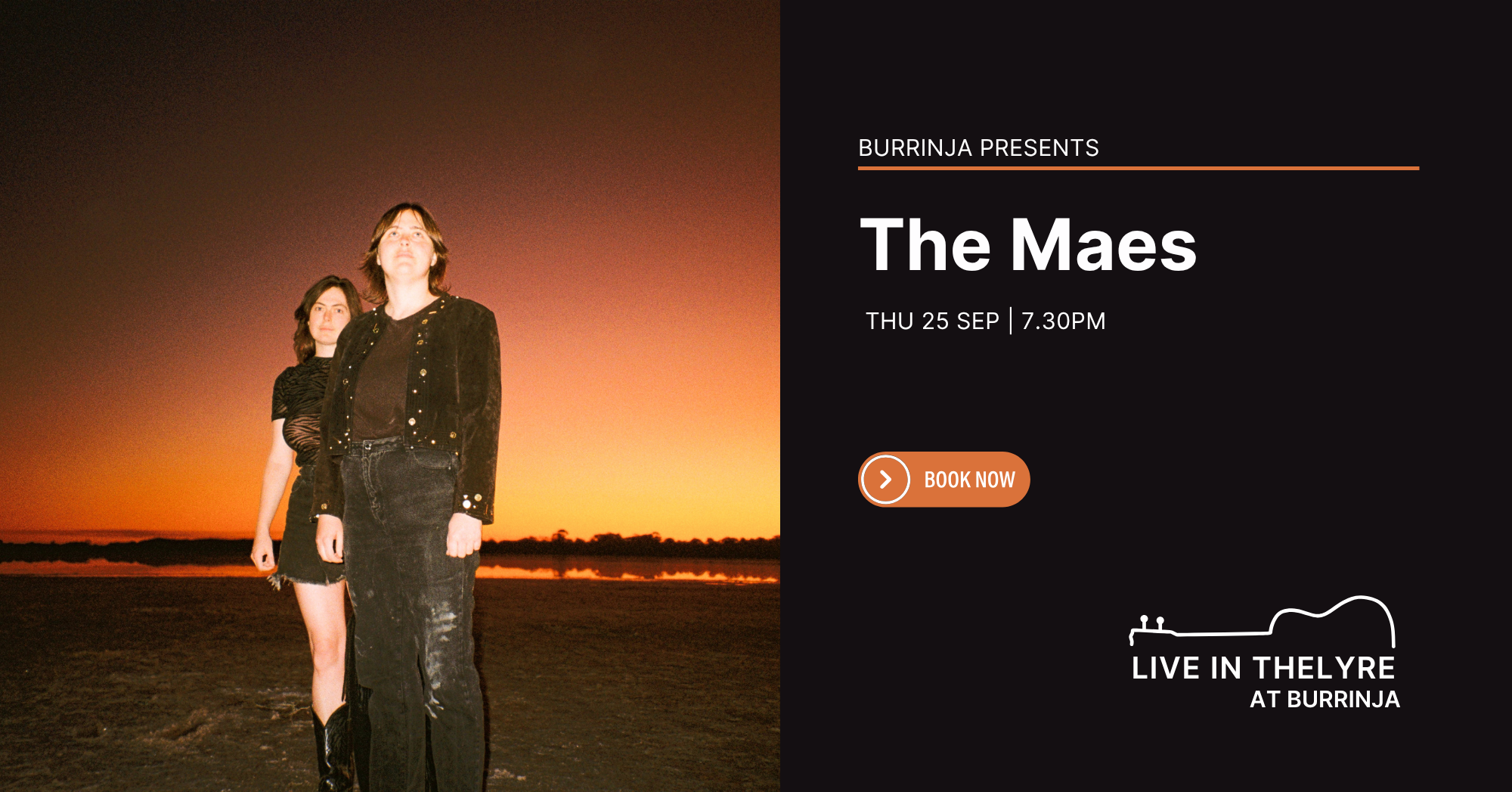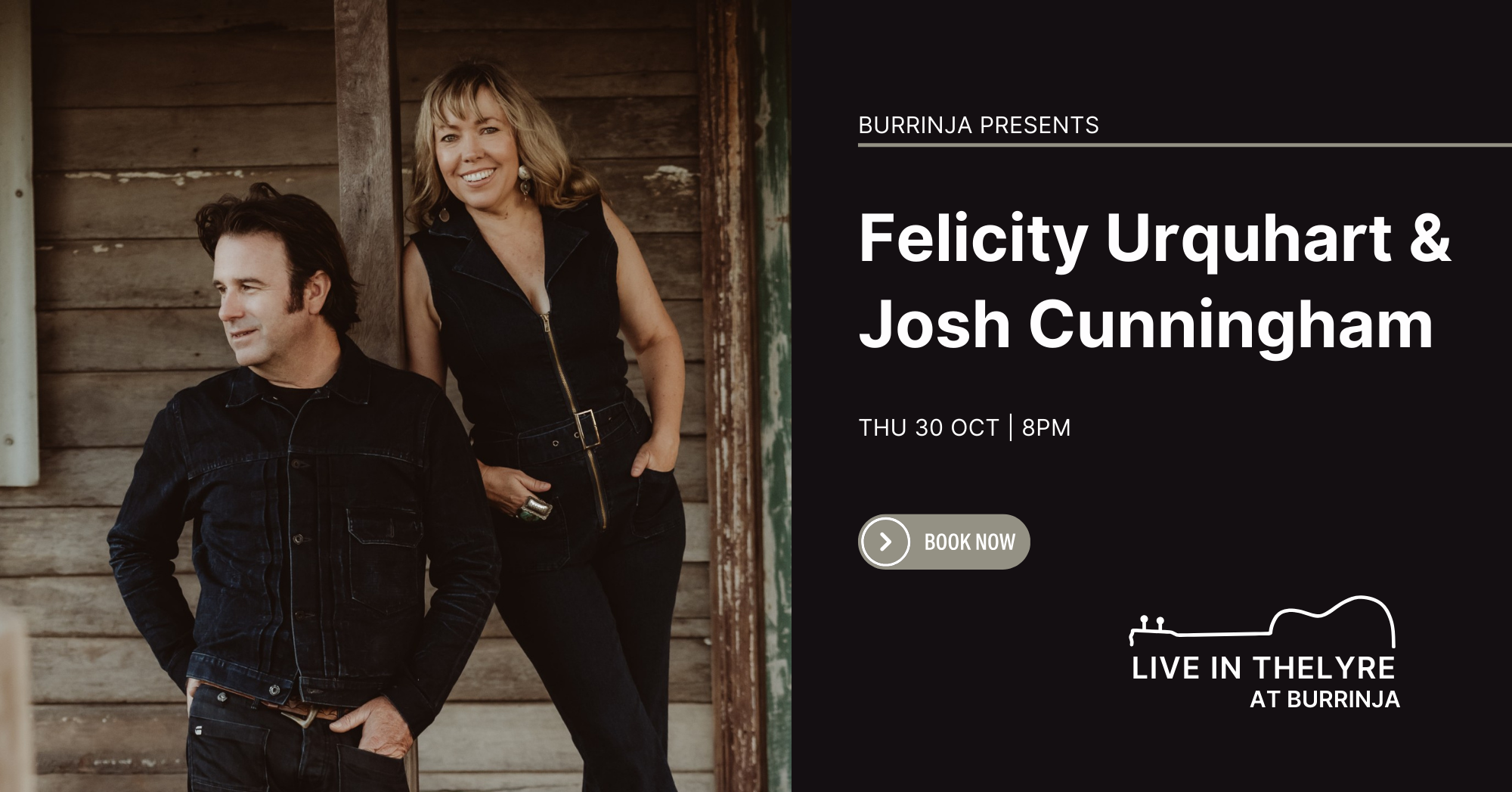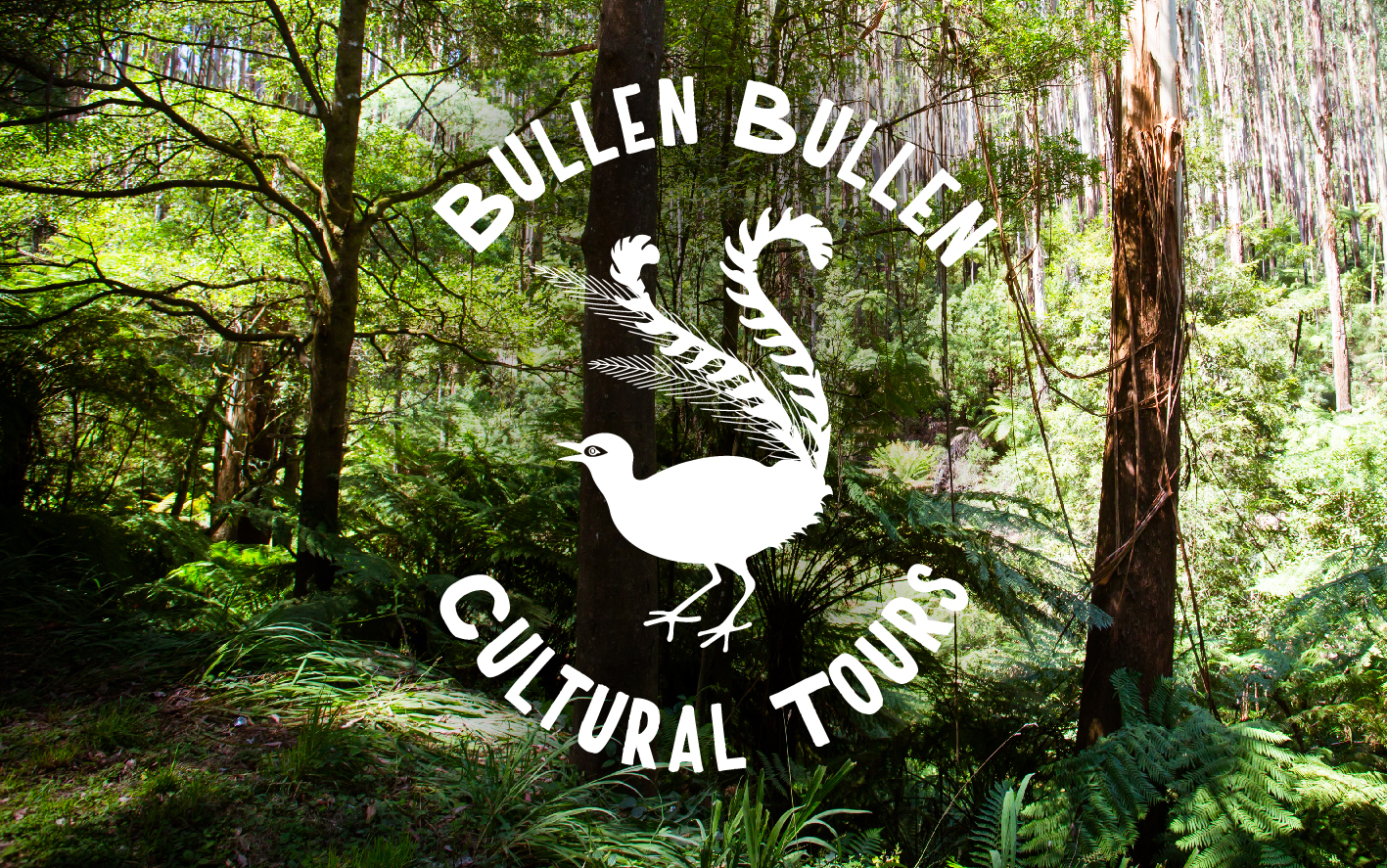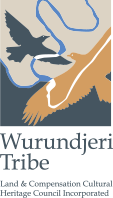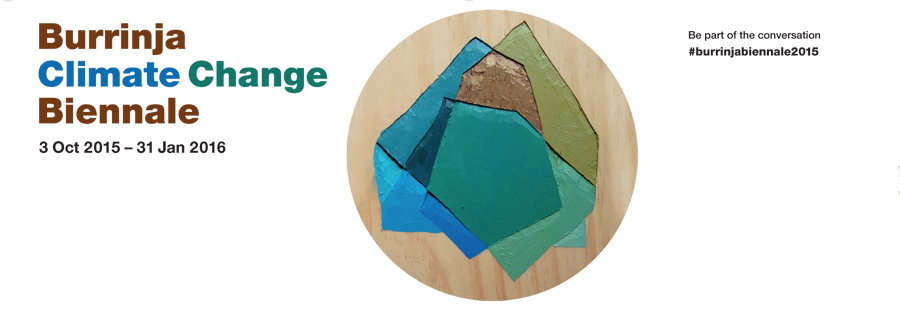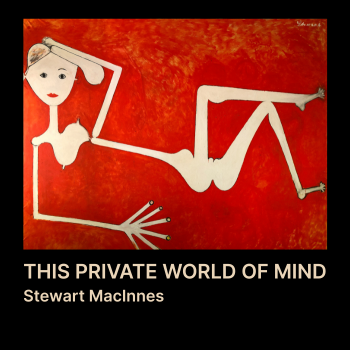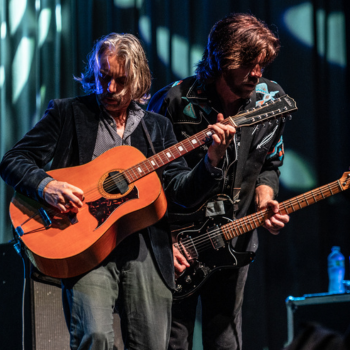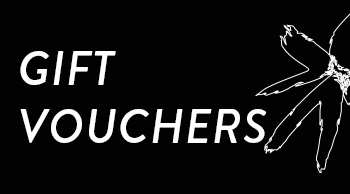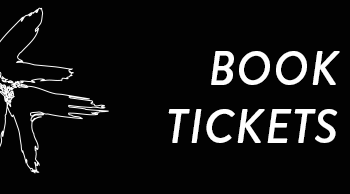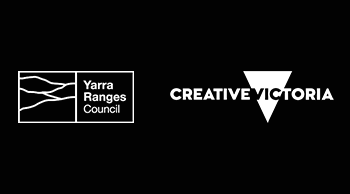The Lost Few, 'Between the Silence', Dave Thomson and Keith Deverell, Burrinja Theatre 2018
Burrinja In-Kind Development Support program
Burrinja is committed to working with artists, facilitators and creative practitioners, and has a range of in-kind support available to the Creative Industries.
Burrinja recognises that physical and financial access to space can be an issue for independent artists, and as such this In-Kind program revolves around providing rehearsal space to artists working within the Live and Performing Arts. The program is specifically aimed to support independent artists working on unfunded projects. If you are working on a project that has received financial support or funding, Burrinja’s spaces are available to hire at affordable and supported rates for not-for-profit and arts related purposes.
This program is designed to provide space to develop creative ideas leading toward public presentation. This is a program to support the creation of new work, not one to support ongoing studio practice. Burrinja does provide a range of ongoing studio hire to independent artists at subsidised rates. Please see our website for more details.
The support offered can be tailored and negotiated with artists, and is offered on a case by case basis.
What Burrinja can provide:
- Access to subsidised studio space for creative development, during Burrinja’s quieter times and non-peak periods. The standard offer would consist of anywhere between 10 and 30 hours, to be negotiated with the artist. Burrinja reserves the right to amend access schedules on short notice.
- Advice and mentoring from the Burrinja Community Cultural Development Officer
- Advice and ideas on marketing and promotion from Burrinja’s Marketing Coordinator
- Basic marketing support with some information and listings on Burrinja website, social media and associated blog
- Support letters for further development or opportunities such as funding, touring, festival applications
Artists are expected to:
- Provide a short acquittal/report at the end of the program (lead questions below)
- Provide Burrinja with a selection of photographs or video from the program, which may be used in Burrinja marketing, promotions and reporting
- Acknowledge Burrinja in any future print and online marketing for the project (i.e. posters, flyers, websites, etc), with the wording “This project has been supported by Burrinja Cultural Centre”, and inclusion of the Burrinja logo
- Treat Burrinja spaces with respect, leaving the space in the same condition it was provided
- Enter into an Agreement with Burrinja committing to the above expectations
- Be open to other possible avenues of support, such as performance outcomes at Burrinja
Applications accepted at any time downloadable information here
Contact
Toni Main Burrinja Cultural Development Producer
9754 8723
This email address is being protected from spambots. You need JavaScript enabled to view it.
To apply, please address the questions below, and submit to Burrinja as PDF or word doc.via email, post or in person.
Burrinja In-Kind Development Support Application Questions
Applicant Name:
Key Person Contact Details:
Project Title:
What is your aim / desired outcome of this program? (max 150 words)
Brief Synopsis of project (max 200 words)
Names and roles of all artists involved:
Number of hours you anticipate requiring, and how you would allocate these hours: (i.e. 4 x 7 hour days, 10 x 2 hour sessions, etc)
Please outline any other specific support you hope to receive from Burrinja: (i.e. advice, support, etc):
Online links to relevant previous work or folio of creative practice:
Please email your application to Burrinja Cultural Centre, with 'Application for In-Kind Development Support' in the subject line.
All applications to be sent to This email address is being protected from spambots. You need JavaScript enabled to view it.
Burrinja will endeavour to process all applications for support within 2 weeks of receiving this application.
Lead Questions to form acquittal / report at end of Development time
Name of artist / company:
How many hours did you use the Burrinja space during your Development:
Please describe how you used your time in the space:
What were the major outcomes, creatively, that this development time enabled?
What are your future plans for presentation and/or development of this work?
Any general feedback on this process?
h3>Previous Projects
The Lost Few, 'Between the Silence', mid 2018
'In Helvetica', Jan 2017
Gareth Hart, 'Infinitum', Aug/ Sept 2016
Hannah Raisin, 'Recall', May 2016
Gulsen Ozer, 'Dynamic', January 2015
Gareth Hart, 'Symphony of Strange', Aug/ Sept 2014
Burrinja recommends
Bullen Bullen Cultural ToursWurundjeri walking tours
Explore the Dandenongs and learn about Aboriginal history
More Info & Bookings here
Address Grants Picnic Ground 70 Monbulk Road Kallista, Victoria, 3791, Australia.
Phone 03 9416 2905*
*available from 9 – 5 pm, Monday – Sunday
E-mail This email address is being protected from spambots. You need JavaScript enabled to view it.
About
The Wurundjeri people (Woi-wurrung language group), are the Traditional Custodians of Melbourne and surrounding lands. They have cared for Country since Bunjil, the great Eagle and Balliyang the bat, created their land and people. They proudly continue to care for Country, practice culture, and welcome people visiting their lands.
Experience Tanderrum
Participate in the ancient tradition of Tanderrum – a ceremony to welcome guests to Country. By walking through sacred smoke and accepting Wurundjeri people’s hospitality, you agree to care for Country, respect the land, the lore, and people, the children of Bunjil, during your stay.
Connect with Story
Glimpse the traditional lifestyle of Wurundjeri peoples Ancestors. Learn about the rhythms, rituals and relationships between people and place. Come to know Wurundjeri cultural values and the great leaders who continue to guide them such as Wonga and Barak.
Connect with Country
Heighten your senses and open your heart to Country. Go and see, smell, taste, touch and hear the music of Country. Learn about Wurundjeri traditional foods, fibres and their special use plants and animals.
The Bullen Bullen Cultural Tours are operated by the Wurundjeri Tribe Land & Compensation Cultural Heritage Council Inc. The organisation is proud to provide traineeships and employment opportunities on Country. By supporting the tours, you’re helping to maintain cultural practice and strengthen Wurundjeri mob.
2015 Exhibition Shortlist
ADi Brierley
Ali Griffin
Ches Mills
Chris Lawry
Elaine Pullum
Eliza Phillips
Emma Jennings
Eva Glac
Gerard Russo
Hartmut Veit
Jasper Killick
Joel Zika
Joy Serwylo
Karly Michelle Whalley
Kiera Brew Kurec
Lisa Roberts
Max Kaluza
Selena de Carvalho
Shelley Krycer
Stephen Powell
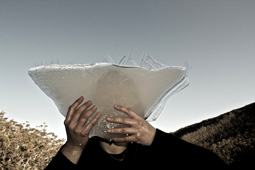
Selena de Carvalho
Season of thought in a de-stabilized Climate
Inkjet Print
2015
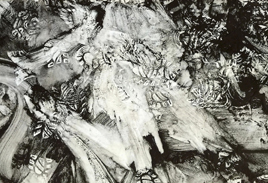
Hartmut Veit
Intra-action-Hazelwood
brown coal Morwell coal dust print on paper
2015
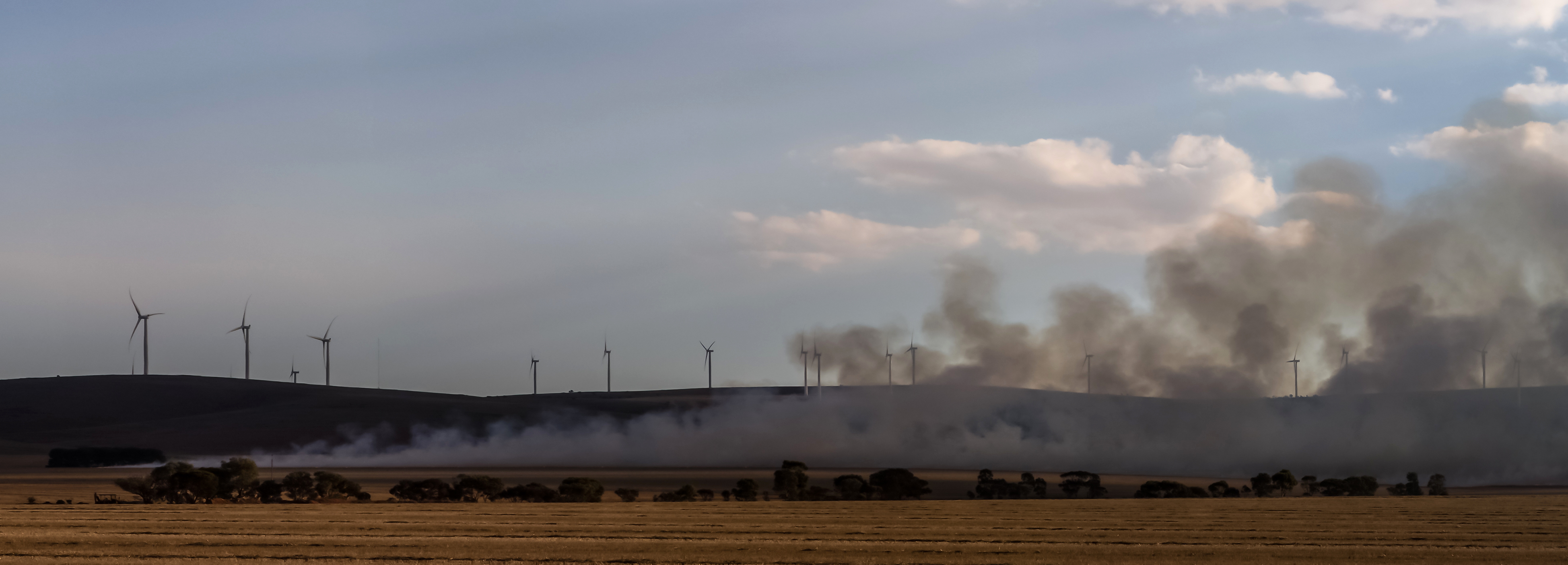 Stephen Powell
Stephen Powell
Hope-Gap
digital print on paper (detail)
2015
Burrinja Climate Change Biennale 2015
The inaugural Burrinja Climate Change Biennale was presented from 3 October 2015 to 31 January 2016.The exhibition presented 20 finalists from across Australia featuring diverse works including painting, print-making, photography, video, installation and performance art. The exhibition finalists were ADi Brierley, Ali Griffin, Ches Mills, Chris Lawry, Elaine Pullum, Eliza Phillips, Emma Jennings, Eva Glac, Gerard Russo, Hartmut Veit, Jasper Killick, Joel Zika, Joy Serwylo, Karly Michelle Whalley, Kiera Brew Kurec, Lisa Roberts, Max Kaluza, Selena de Carvalho, Shelley Krycer and Stephen Powell.
Mixed media artist Joy Serwylo was awarded the 2015 Burrinja Climate Change Biennale Acquisitive Award valued at $3000 for her work 'At this point of time, it appears that we have not yet established a plan B’.
Immersive and experiential in nature, the exhibition invited direct responses in-situ as well as online via social media. A program of on site art-making activities accompanied the exhibition. Over 2,000 visitors attended the exhibition.
The Burrinja Climate Change Biennale strives to provoke and track continued critical discussion and cultural conversation around climate change. By revisiting the theme via an acquisitive award exhibition every two years, Burrinja is looking forward to building a valuable historic archive of artists’ reflecting changing cultural responses to climate change.
For more info about Burrinja please visit: www.burrrinja.org.au
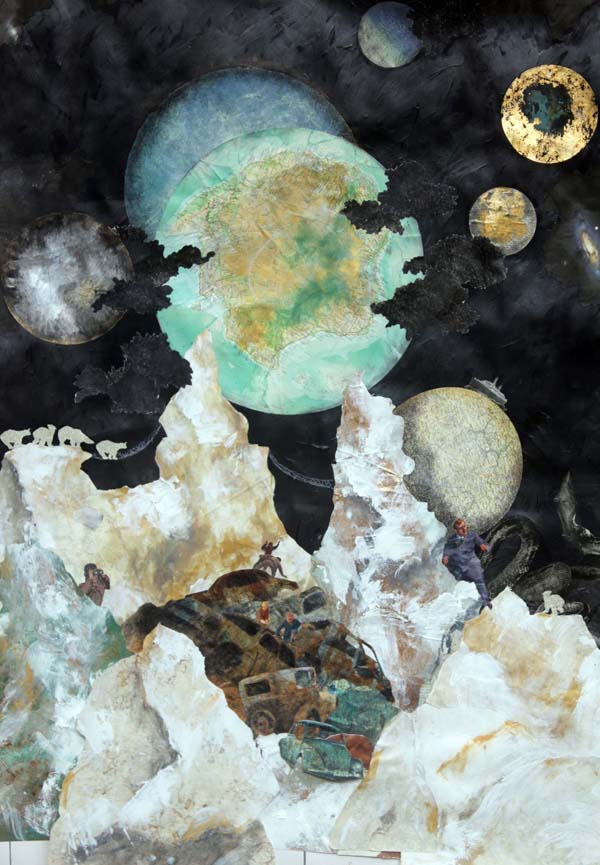
Joy Serwylo
At this point of time, it appears that we have not yet established a plan "B"'
mixed media
2015


The Culture of Collecting Then and Now
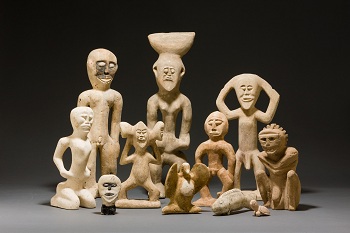 Various Ingiet Stone Carvings, New Britain, PNG, McLeod Gift Collection Photography by Kate Morris
Various Ingiet Stone Carvings, New Britain, PNG, McLeod Gift Collection Photography by Kate Morris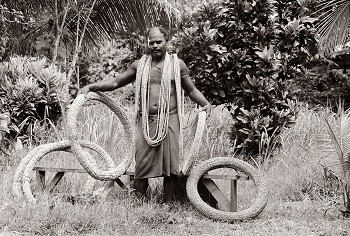 Tolai Man presenting Shell Money | Photography by Neil McLeod
Tolai Man presenting Shell Money | Photography by Neil McLeod
As part of the showcase exhibition 'Secret Ingiets' Burrinja is delighted to present a symposium on Pacific Art Collections - The Culture of Collecting Then and Now
Like many museum collections of Pacific art, Yarra Ranges Council's McLeod Gift Collection, managed and curated by Burrinja, has been built through efforts of collectors in the field, often at their own risk and with their own money. Most of these remarkable collections have been amassed in the late 19th and first half of the 20st century. Yet, with increasing acknowledgement of intellectual and creative rights of the ethnic/indigenous communities of origin important issues of access and interpretation of cultural material have arisen. Consultation and collaboration have now become relevant aspects in contemporary museum practice. Repatriation of cultural material including that of sacred objects and human remains is no longer unusual.
This symposium brings together experts in the Pacific arts and museum sector discussing aspects of how the nature of field collecting has changed over time? How it has affected indigenous communities, and what the national and global trends in managing Pacific Collections and making it accessible to communities of origin are?
Pacific Art Collections – The Culture of Collecting Then and Now addresses these and related important contemporary collection issues with a remarkable program of notable speakers representing a wide cross section from the sector – from field collectors to senior collection curators and those who can best provide the perspective of indigenous communities of origin.
Speakers Include:
Harold Gallasch
Pacific art collector, curator and valuer, Hahndorf
Jim Specht
Senior Fellow, Australian Museum, Sydney
Mike Pickering
Senior Curatorial Fellow, National Museum of Australia, Canberra
Dion Peita
Collections Manager, Pacific and International Collections, Cultural Collections and Engagement, Australian Museum, Sydney
Grace Vele Guise
Senior Technical Officer, Anthropology Department, Papua New Guinea National Museum and Art Gallery, Port Moresby
Saturday 7 September 2013 Burrinja Theatre, 11 am – 4 pm
$65 Full Price,
$35 Student/Jarmbi Members
Includes Morning Tea, Lunch and Afternoon Tea.
Symposium Program Details
Program and Booking form avaliable to download here
Session 1 Harold Gallasch | Powerful Ingiets
As a group, the Tolai people emigrated from New Ireland, via the Duke of York Islands, to the Gazelle Peninsula of New Britain. In their new home-land they flourished, and so did their two men's secret societies, which became much more powerful. While the Tubuan society acted as a select group within the community the Ingiet was a fringe group, preying very much on the fears of the people, a society often using extortion and murder to gain its own ends.The adherents to this group were rarely known, conducted ceremonies in secret, often deep in the jungle. But, by the use of sorcery, they exerted great control over the Tolai community. A part of the 'modus operandi' of the Ingiet was the carving of small stone statues. The spirit of evil could be infused into these carvings to the extent that, even in the late 20th Century, they were feared by those older people with knowledge of the Ingiet's power.
Session 2 Jim Specht | Collecting 'dead birds' and other 'curiosities' in the New Guinea Islands, 1875-1914
The late 19th century was an incredible period for museums and private individuals seeking to acquire artefacts, often described as 'curiosities', from the Pacific Islands. While some of this acquisition was linked to the how-discredited view of the world's non-western peoples as representatives of stages of 'cultural evolution' earlier than that of the societies of western Europe and North America, there was also a strong commercial interest among both individuals and companies. This was particularly marked in the New Guinea islands, where German colonial interests generated one of the most remarkable phases of collecting in Pacific history. Over a period of 40 years, from 1875 to 1914, thousands of artefacts were taken to Australia, the USA and Europe. German colonial residents particularly vied with each other to make the most impressive collections for museums in German cities in the hope of attracting special honours ('dead birds') from the various Grand Duchies,Principalities and Free Cities. In the years before the Great War of 1914-1918, numerous expeditions visited these islands and further stimulated this competition. The talk will describe these activities, and discuss some of their implications for both then and now.
Session 3 Mike Pickering | Old Ways and New Ways. Changes in the Ways Museums Collect
Over the past 25 years there has been increasing self-examination by history museums on the issues of collection histories. As we look at the ways in which our objects were acquired in the past we have learnt to consider ways in which objects are acquired today. Objects in collecting institutions have arrived there through many channels – by theft, grave-robbing, lootings, police and military actions, legal process, sale, gifting, donation, and serendipity. ] Ethical engagement with collections – for research or exhibition – increasingly requires revisiting the circumstances of collection [ and collection histories ]. This is addressed in this paper, firstly through case studies of the ways in which Pacific objects have arrived in the National Museum of Australia and secondly through an examination of how the ethics of collections is affecting the museums national and international engagements.
Session 4 Grace Vele | What is primitive art in PNG, the culture of collecting and preserving the cultural heritage of
the country
Session 5 Dion Peita | Understanding of Heritage, Identity and Self for Pacifica Peoples in NSW
The Australian Museum holds one of the largest and most significant collections of Pacific material in the world, 60,000 objects, and are therefore uniquely placed to develop bespoke social inclusion programs that draw on this rich collections. Since 2009 the Museum has been exploring innovative ways to work with young people from Sydney's Pacific diaspora convicted or charged with serious and violent criminal offences. Our aim is to build cultural awareness among 'At risk' youth from Pacific communities and to challenge beliefs and perceptions that being a 'warrior' is synonymous with being violent. We aim to provide young people with a sense of pride and dignity when the history of the objects is explained to them, and as their relationship to these powerful objects is revealed. As part of a broader suite of intervention programs, we contend that exposure to traditional culture can help young people break the cycle of offending, and lower the chance that they will offend again in future.
Session 6 Panel Discussion | Between the Old and the New?
The Future of Pacific Art Collections traversing the Traditional and Contemporary
Featuring; Dion Peita, Mike Pickering, Grace Vele, others TBC
Public Programs
Secret Ingiets Exhibition Opening | Saturday 7 September @ 4.30pm
Burrinja Gallery | Free Entry
Come and celebrate the opening of the Mysterious Secret Ingiets exhibition at the Burrinja Gallery. Cr Jim Child, Mayor, Yarra Ranges Council will officially open the exhibition, In the presence of Emmanuel Mulai, Ratongaor Village, East New Britain.
Film Screening of 'Savage Memory' | Saturday 7 September @ 6.00pm
Burrinja Theatre | Free Entry
Bronislaw Malinowski is commonly regarded as one of the founding fathers of anthropology. With extensive research on sex, magic and spirits of the dead among the Trobriand Islanders in Papua New Guinea in 1915, his work set the stage for future anthropologists. Four generations later, his great-grandson travels to the Trobriand Islands confronted by a very controversial legacy Malinowski left behind.
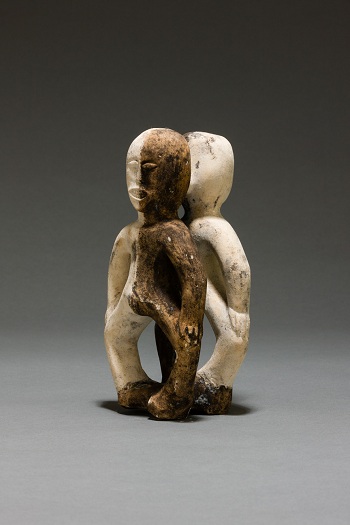 Secret Ingiet | catalogue item BOO63
Secret Ingiet | catalogue item BOO63 McLeod Gift Collection | Photography by Kate Morris
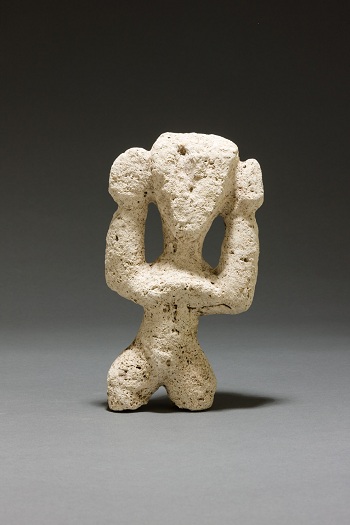 Secret Ingiet | catalogue item BOO58
Secret Ingiet | catalogue item BOO58McLeod Gift Collection | Photography by Kate Morris
Last updated 03/09/2013
